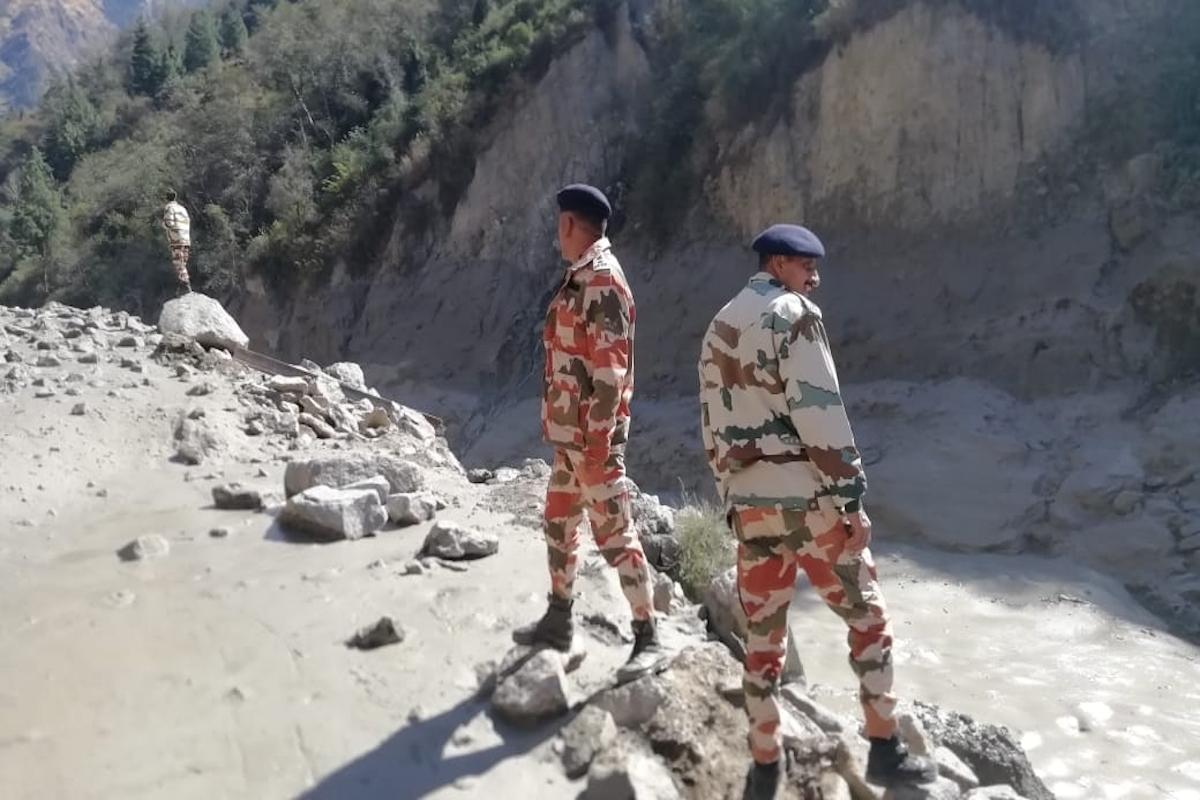The recent disaster in Uttarakhand has once again demonstrated that we need to be very cautious in causing any further aggravation of increasing stresses and threats in the Himalayan region. In fact, the earlier and greater tragedy in the state in 2013, as well as other disasters in other parts of the Himalayan region have conveyed a similar message. But unfortunately, the authorities and decision-makers have generally chosen to ignore these warnings.
Basically, these recent tragedies underscore the exceptionally intense and somewhat untimely trends in these times of climate change. In the latest disaster, for example, such fury was not anticipated in the first week of February, and even took some experts by surprise. But such events can no longer to be treated as unexpected in these times of climate change, and this is one clear lesson we must learn.
Advertisement
The second important lesson, delivered on an even more massive scale in the 2013 disaster than in the present one, is that nature’s fury can be aggravated with very serious and tragic results if disruptive activities are carried out on a vast scale in the ecologically sensitive and geologically fragile Himalayan region. In 2013 and in 2021, we have seen such aggravations by indiscriminate and very large-scale proliferation of hydel projects, that came up ignoring warnings.
The projects affected this time are relatively smaller ones. God forbid that any serious disaster implicating the colossal Tehri Dam Project should ever take place. Not leaving everything to God, if we take a rational and scientific approach to the safety of people, then we cannot ignore the well-documented reality that some prominent experts, including those represented in officially appointed committees, and in fact even official committees themselves, have repeatedly referred to the extremely high hazard potential of this dam.
In fact, this project was rejected by the officially constituted Environment Appraisal Committee (EAC) on grounds of safety (as well as other adverse impacts) but was pushed nevertheless by powerful interests and finally cleared on the basis of manipulated evidence.
Although the EAC Report examined all important aspects of the Tehri Dam project (TDP), it gave its opinion that safety factors alone are important enough to stop the clearance of this project. It said: “Taking note of the unacceptable risk involved, extremely poor status of readiness to deal with the hazards and unprecedented damage in case of a breach or overtopping, the Committee reiterates its considered view that it would be irresponsible to clear the Tehri dam as currently proposed.”
More specifically, the committee said: “Therefore, considering the almost total certainty that a strong earthquake of magnitude greater than 8.0 on Richter scale will occur in the region during the life of the dam, and considering that the dam design does not provide for such an earthquake, the Committee has no option but to conclude that construction of Tehri dam, as proposed, involves totally unjustified risks. The magnitude of the disaster that would follow, if the dam collapsed, strengthens the Committee’s opinion that approval to the construction of this dam, as proposed, and at the present site, would be irresponsible.”
Now, there should be very high level of safety precautions taken up constantly in the case of the Tehri Dam project as well as other hazardous projects. However, in times of climate change we do not know the extent to which a flood or related disaster may shape up. In addition, we must contend with the disturbing fact that the Tehri Dam Project may not be able to withstand the highest level of earthquake which is a possibility in the region.
Keeping in view these possibilities, should not the decommissioning of this highly hazardous project be considered as a real opt ion? Af ter this project was cleared and constructed in an arbitrary fashion, climate change has become a much more pressing reality. Disasters involving much smaller projects in the Himalayan region have led to several thousand deaths, not to speak of enormous other damage.
A question that we cannot ignore in view of what has been already stated by officially constituted independent committees is what would happen in case of failure of a the Tehri dam. We should always pray for the best, but not ignoring scientific reason and factual evidence, we should be prepared for the worst. Dams have been decommissioned for much less severe reasons in several countries (at the rate of about 50 per year in the USA) in recent times. So why not here, when this is potentially a question of saving several hundred thousand lives, as indicated by the government’s own expert committees.
We already have past experience of dam failures that proved very expensive, for example of Henan region of China where in 1975 failure of the Banquio and Shimantan dams led to an estimated 171,000 deaths and nearly 11 million people losing their homes.
What about ongoing and proposed constructions of many other mega dams and other high-risk projects in the Himalayan region? Learning from recent disasters, clearly a re-evaluation of these projects based on safety and environmental concerns should be on the agenda.
This is important not just for India but for all countries of the Himalayan region. These countries should cooperate with each other to avoid high-risk projects in the Himalayan region.
Another lesson is to take special care of the safety of migrant and other workers employed in construction projects in the Himalayan region as they have become victims in several disasters, both because of working and living in very risky conditions and also because of their lack of familiarity with Himalayan disaster situations.
The writer is a journalist and author. His recent books include Planet in Peril and Protecting Earth For Children











